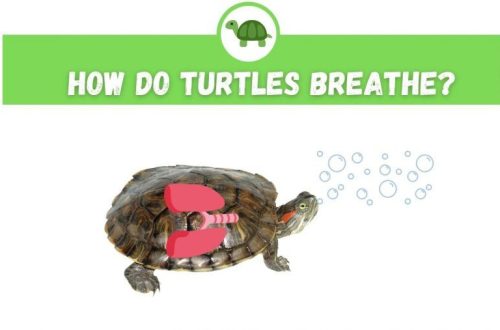
Diseases of red-eared turtles: symptoms, treatment, prevention
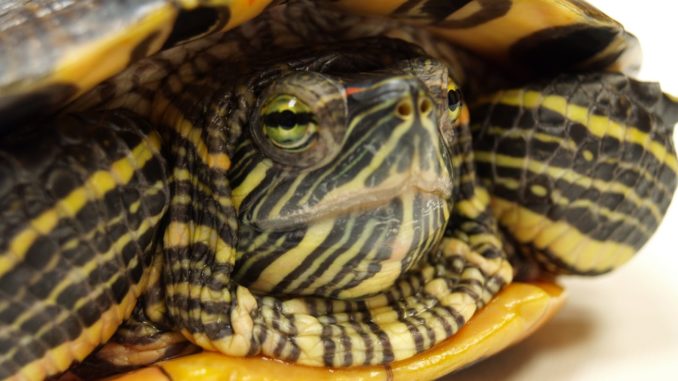
Red-eared turtles in their natural habitat practically do not get sick. However, domestic reptiles often get sick due to a banal violation of the conditions of feeding and keeping. You should not independently treat red-eared turtles at home without consulting a herpetologist, incorrect diagnosis or excess dosage of drugs can lead to complications or death of a freshwater pet.
Contents
How to understand that the turtle is sick
Healthy aquatic turtles are distinguished by good activity and increased appetite, reptiles are curious about external stimuli and try not to miss treats with their favorite treats. Most of the time, exotic animals spend in the water, gracefully moving around the entire volume of the aquarium. The main external indicators of the health of reptiles are clean, dry eyes and nose, and the absence of damage to the skin and shell.
Common symptoms of red-eared turtle disease include:
- lack of mobility;
- refusal to feed;
- lethargy, apathy;
- unwillingness to be in the water;
- list when swimming, inability to sink to the bottom or emerge;
- swelling of the eyes and neck;
- skin peeling;
- exfoliation of horny plates;
- deformation of the shell and beak;
- discharge from the nose and eyes;
- bleeding;
- plaque, ulcers, nodules on the skin or shell;
- shallow breathing with wheezing, clicks and whistling;
- violation of the integrity of the horny plates and bones.
Most often, the full clinical picture manifests itself in advanced cases, when it is extremely difficult to save the life of a small reptile, so it is recommended to show the animal to a specialist when the first symptoms of turtle diseases appear.
The main diseases of aquatic turtles
The occurrence of various diseases of the red-eared turtles leads to a decrease in the resistance of the reptile organism against the background of the following adverse factors:
- unbalanced feeding;
- overfeeding;
- lack of vitamin and mineral supplements in the diet;
- insufficient feeding with calcium-containing products;
- keeping aquatic reptiles in cold or dirty water;
- no sources of ultraviolet radiation;
- finding an animal on a dirty cold floor;
- drafts;
- low water and air temperature in the aquarium.
Infectious and non-infectious diseases of aquatic reptiles are complicated by fungal and bacterial infection, which, in the absence of timely competent therapy, quite often leads to the death of pets. It is extremely difficult to cure a red-eared turtle on your own, so the right decision when the first symptoms of turtle diseases appear is to contact an experienced specialist in a timely manner.
Eye diseases
The cause of eye diseases in reptiles is their content in dirty water, microtrauma of the eyes, the ingress of foreign bodies on the mucous membrane of the organs of vision, the reaction of the animal to pungent odors, plant pollen, caustic, smoke, lack of vitamin A. In a sick pet, the eyes are very swollen, the eyelids are completely stick together. Sometimes there is a narrowing of the palpebral fissure or inflammation of only one eye. A white-yellow cheesy exudate accumulates under the lower eyelid, mucopurulent discharge from the nose and eyes is observed. The pet tries to sit motionless on land and completely refuses to feed.
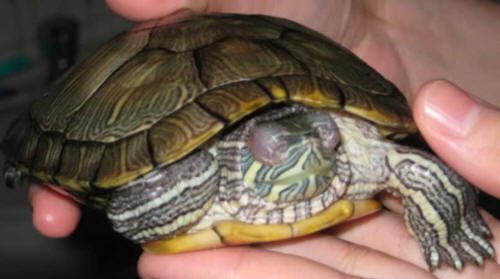
Treatment of eye diseases of reptiles consists in regular washing of the mucous membrane of the eyes with Ringer-Locke solution, followed by instillation of antibacterial, anti-inflammatory or hormonal drops.
Intestinal diseases
Indigestion occurs when overfeeding aquatic reptiles, insufficient feeding of calcium-containing foods, infection with helminths or intestinal infection. Most often, tympania is diagnosed in red-eared turtles – bloating of the stomach, which is characterized by increased gas formation due to the development of fermentation processes. Pathology is accompanied by soreness, refusal to feed and severe oppression of the pet. The red-eared tortoise cannot retract its head and limbs into its shell; when swimming, it collapses on its side; sometimes vomiting and emptying of undigested food are observed. Intestinal pathologies of an infectious nature are most often accompanied by vomiting, diarrhea or constipation, parasites can be found in the feces.
To relieve painful symptoms during tympania, the animal needs to drink carminative children’s syrup Espumizan and inject a 20% solution of calcium borogluconate or a 10% solution of calcium gluconate. During the day, the animal is shown a starvation diet, further feeding is done fractionally in small portions. Intestinal infections are treated with antibacterial, antiparasitic and anti-inflammatory drugs.
Pneumonia
Inflammation of the lungs of red-eared turtles develops when the animal is hypothermic due to keeping a waterfowl in cold water, drafts, walking on a cold floor. Sometimes pneumonia is a complication of rhinitis or a cold. Inflammation of the lungs is a deadly condition for a small reptile, therefore, treatment must be started at the first signs of the disease, the sick animal becomes lethargic, refuses to feed, collapses on its side when swimming and cannot dive. The turtle produces foam from the nose and beak, shortness of breath, coughing and sneezing. The animal often stretches its neck, sits with its beak open, clicks or whistles.
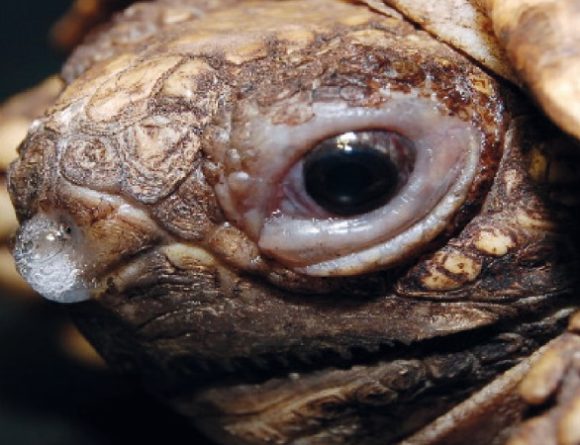
Treatment of pneumonia in red-eared turtles is carried out using a course of injectable antibacterial and vitamin preparations, and anti-inflammatory baths in warm chamomile broth are prescribed to a sick animal.
Otitis media, abscesses
Inflammation of the ears or the appearance of abscesses in aquatic reptiles is associated with keeping the animal in dirty water. Sometimes the cause of purulent inflammation can be trauma to the head or limbs, a lack of vitamin A, a fungal infection. The occurrence of abscesses is evidenced by the appearance of a characteristic swelling on the head or limbs, the animal becomes inactive and refuses to feed.
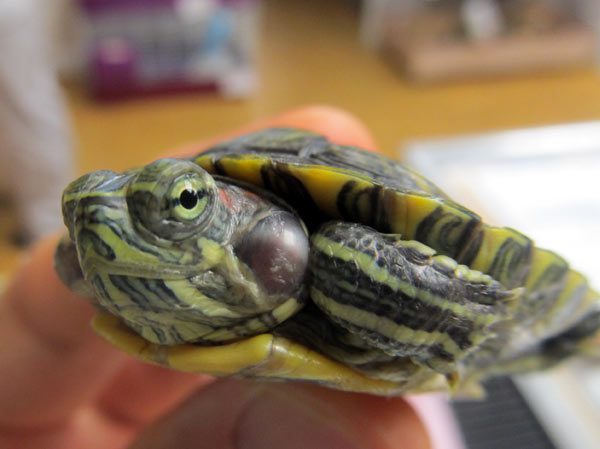
Abscesses and otitis in reptiles are treated surgically with the further appointment of antibacterial, vitamin and anti-inflammatory drugs.
Injuries, burns
Careless or rough handling of an animal, fights with relatives, attacks on a reptile by pets, improper installation of light sources lead to bruises, cuts, wounds, scratches, burns or fractures.
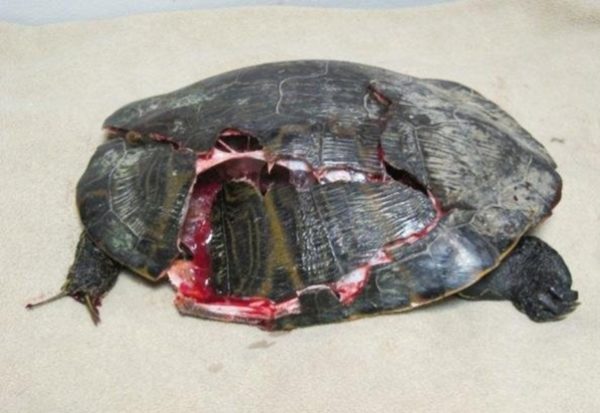
Burns, lacerations and fractures should be treated at a veterinary clinic. The animal is prescribed antibacterial, analgesic, anti-inflammatory and wound healing agents.
Minor scratches and cuts can be treated at home with disinfectant solutions and drying agents.
Rickets
A metabolic disorder in red-eared turtles caused by a lack of calcium or vitamin D is called rickets. Pathology develops against the background of unbalanced feeding, pathologies of the gastrointestinal tract and kidneys, and the absence of a source of ultraviolet radiation. Rickets is manifested by softening and deformation of the shell, failure of the hind limbs, swelling of the eyes, lethargy and refusal to feed. As the pathology progresses, swelling and bleeding, fractures of the limbs, prolapse of the cloaca and shortness of breath are observed.
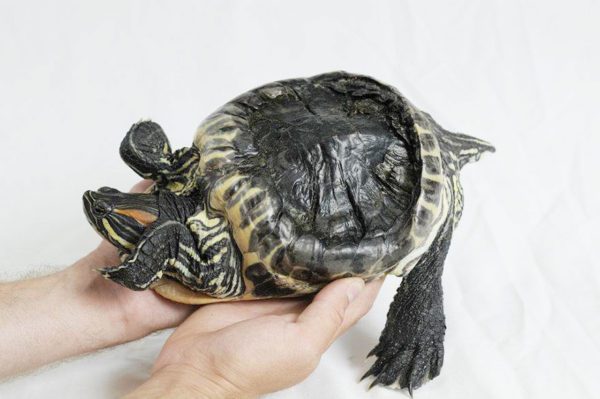
The treatment of rickets is reduced to the normalization of the conditions of keeping and feeding an aquatic reptile, the introduction of vitamins, antibiotics, calcium, potassium and magnesium-containing drugs. A sick turtle is prescribed irradiation with an ultraviolet lamp, anti-inflammatory baths in chamomile broth.
Avitaminosis A
Avitaminosis or hypovitaminosis A occurs in red-eared turtles with unbalanced feeding or lack of vitamin supplements in the diet of pets. Against the background of a lack of retinol in waterfowl turtles, their eyes swell, rhinitis and stomatitis develop. Symptoms of avitaminosis A are prolonged molting, exfoliation of the horny scutes, peeling of the skin, prolapse of the cloaca and progressive emaciation.
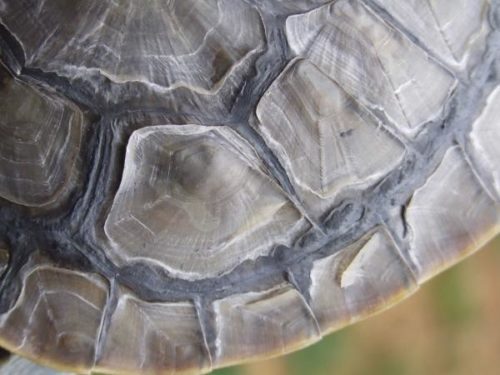
For the treatment of hypovitaminosis A, a double injection of the Eleovit vitamin preparation is indicated with an interval of 14 days.
Diseases of the oral cavity
Unbalanced feeding of red-eared turtles with a lack of vitamins A and D can lead to the occurrence of pathologies of the oral cavity – necrotic stomatitis, herpes and herpesvirosis. The disease in aquatic reptiles is manifested by swelling of the oral mucosa, profuse salivation, and the appearance of purulent flakes in the mouth. The beak of a pet smells bad, the turtle becomes lethargic and refuses to eat.
Treatment of diseases of the oral cavity is carried out with the use of antibacterial and anti-inflammatory drugs; in advanced cases, pathologies often end in death.
Shell diseases
Stratification of the horny scutes of the carapace in red-eared turtles is a symptom of rickets, fungal infection, or ulcerative exfoliating disease of the carapace. The lack of calcium and vitamin D is manifested by thickening and deformation of the animal’s armor. The defeat of a reptile by pathogenic fungi is accompanied by the formation of a grayish-white coating, vesicles and delamination of the shell shields. Ulcerative exfoliating disease of the shell is characterized by a deep necrotic lesion of the bone structures, in a sick animal, the horny shields are exfoliated with the formation of red ulcers.
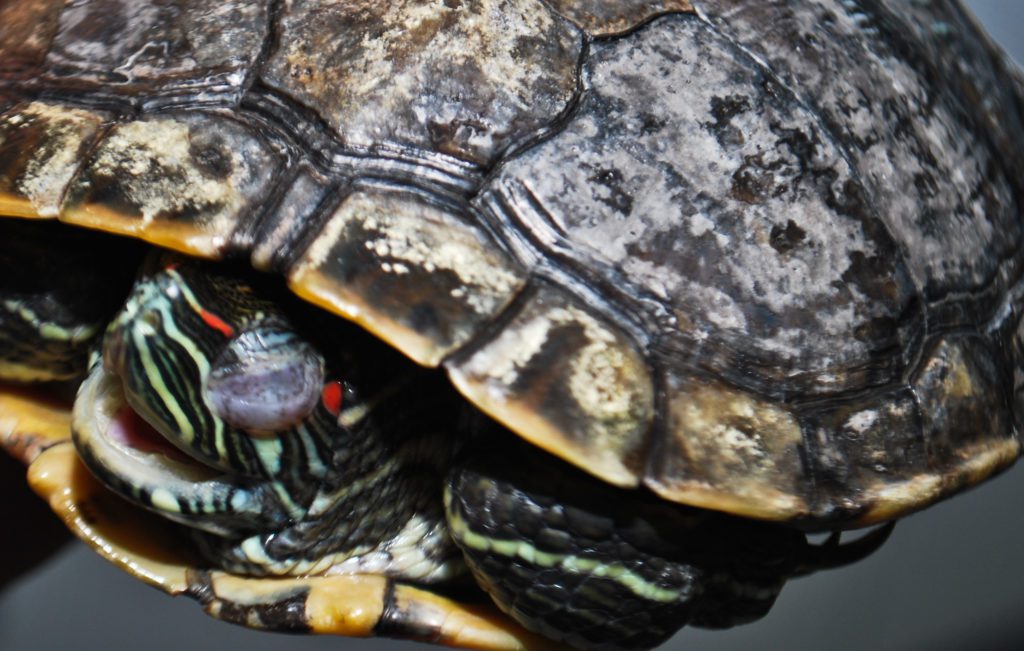
The treatment of shell diseases depends on the nature of the disease, the pet is prescribed bathing in a solution of methylene blue and chamomile decoction, irradiation with an ultraviolet lamp for reptiles and vitamin preparations. If necessary, the specialist treats the animal with antifungal and antibacterial drugs.
Diseases of the skin
Skin diseases of aquatic reptiles develop with a lack or overdose of vitamins A and B, fungal or infectious skin lesions, keeping the animal in dirty water, mechanical damage to the integrity of the skin. Symptoms of dermatological pathologies are peeling and swelling of the skin, the appearance of vesicles, ulcers, cracks and wounds, the formation of cotton wool.
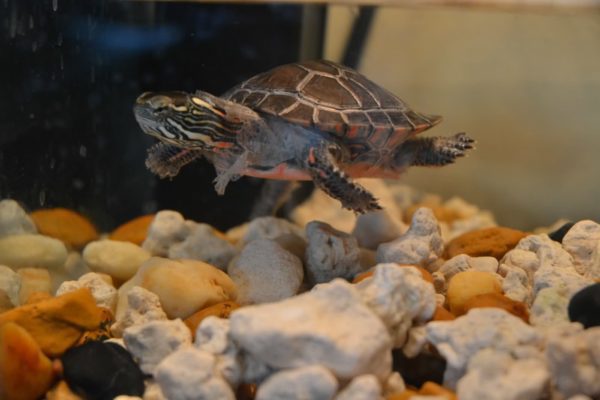
Therapy for skin diseases of aquatic turtles consists in the use of vitamin, anti-inflammatory, antifungal and antibacterial drugs.
Disease Prevention
The best prevention of diseases of red-eared turtles is to create optimal conditions for the life of aquatic reptiles:
- a predatory animal should eat sea fish, shrimps, molluscs, snails, vegetables, herbs, liver;
- be sure to add vitamin and mineral supplements for reptiles to the diet;
- the temperature in the aquarium should be at least 28C, and on land – at least 30C;
- be sure to install an ultraviolet lamp for reptiles, which must be turned on daily for 10-12 hours;
- in order to avoid the development of infectious and fungal diseases, it is recommended to keep the reptile only in clean water with regular cleaning and disinfection of the aquarium.
Treating a sick animal at home without consulting a veterinarian is highly discouraged due to the risk of unpleasant consequences of illiterate therapy.
The first signs of diseases in freshwater pets in most cases are a decrease in appetite or a complete refusal to feed, lethargy, apathy, and a lack of response to any external stimuli. In such a situation, it is recommended to consult a herpetologist, early diagnosis and treatment can prolong the life of a loved one.
Treatment of diseases of aquatic red-eared turtles
3 (60%) 8 votes





